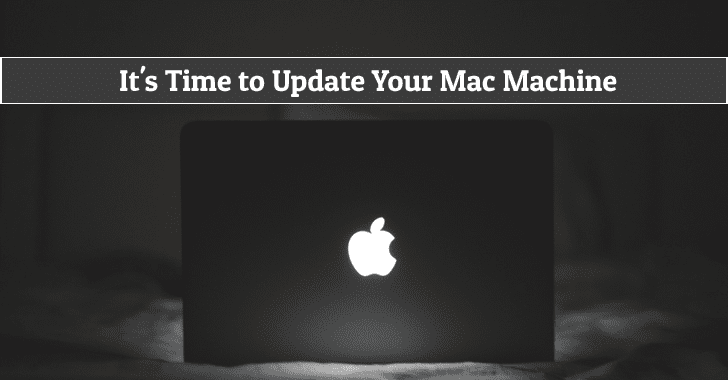Important Update For Mac
Although Apple makes new software updates available to as many older devices as possible, there are always some reasons why it may not be in your best interest to install the latest and greatest, even if your Mac is compatible. Is my Mac compatible? If you have the following model of Mac, you can download and install macOS Mojave:.
MacBook (Early 2015 or newer). MacBook Air (Mid 2012 or newer). MacBook Pro (Mid 2012 or newer). Mac mini (Late 2012 or newer).
iMac (Late 2012 or newer). iMac Pro (2017). Mac Pro (Late 2013, plus mid-2010 and mid-2012 models with recommended Metal-capable GPU) If your Mac is older than any of the models listed above, it isn't compatible with macOS Mojave. In order to use features like phone calling from your Mac, Handoff, Auto Unlock, Camera Continuity, and Apple Pay on the Web, you'll want to make sure you have an iPhone 6 or newer running iOS 10 or later or an Apple Watch running watchOS 3 or later.
These devices aren't necessary to use Mojave, but they are necessary to use the Continuity features between macOS, iOS, and watchOS. Continuity Camera requires iOS 12 or later and macOS Mojave or later. Do you meet the requirements to use all of macOS Mojave's new features? If not, you may want to think about whether it is worth the effort to install it.
Latest Update For Mac
Any Mac older than 2012 doesn't get many of the Continuity features, like Handoff, AirDrop, Universal Clipboard on your Mac, and Apple Pay on the Web. Are these cross-device features important to you?
Maybe it's time to upgrade your Mac. I'm ready to try it out, but what if I don't like it? Upgrading to a new software system, especially on a computer, can be a big upheaval that causes stress and confusion. You might be excited about macOS Mojave after reading about everything it can do, but quickly decide that it's not right for you. The first, and most important thing you should do before upgrading to macOS Mojave (or updating any software, no matter how small), is to back up your Mac. Next, it is not a bad idea to think about partitioning your Mac so you can install macOS Mojave in tandem with your current Mac operating system.
That way, you can get used to the changes while still having access to what you are familiar with. It will also make it easier to simply delete the software if you know you don't want to use Mojave at all. If you've downloaded macOS Mojave on your main hard drive, you're not out of luck. You can always downgrade back to your previous operating system. I'm just going to go for it! It's not always such a good idea to download a huge update on Day One.
There are a number of factors that can give you a negative experience right out of the gate, which might leave a bad taste in your mouth. Hundreds (or even thousands) of people will hit the download button the exact moment they hear that macOS Mojave is available to the public, which could put a strain on the servers and make it take a really long time for you to complete the process.
With changes in macOS Mojave, it also means that some third-party apps will need to be updated for compatibility. Not all developers will have their updates ready right away. If there are any apps that you just can't live without, you might be forced to. Live without until they are updated. The best way to see if your must-have apps are going to be ready for macOS Mojave is to visit the companies' websites or check their social media feeds. Proceed with caution If, after reading everything I suggested, you still think you are ready to upgrade to macOS Mojave, then, by all means, go for it!

I've been using it for a couple of months now, and frankly, I love it. Just make sure you've got a current backup of your Mac, just in case something goes wrong. Updated September 2018: Updated for macOS Mojave.